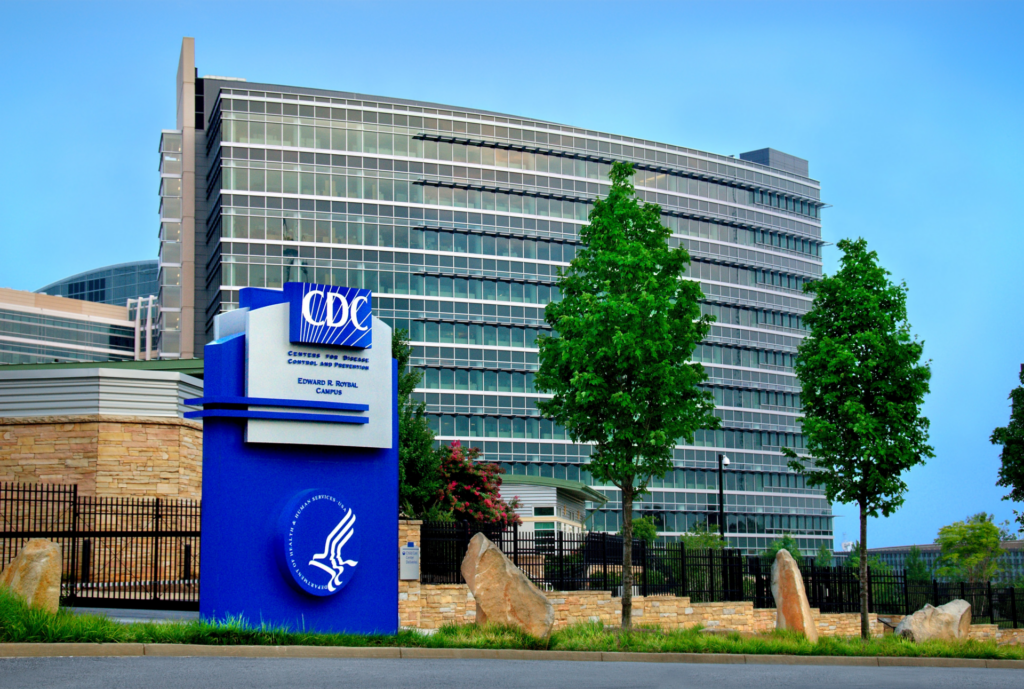The CDC may end the isolation period for COVID-19. Some experts think the change reckless.
By Matt Field | February 14, 2024
 The Centers for Disease Control and Prevention (CDC). Credit: James Gathany/CDC via Wikimedia Commons.
The Centers for Disease Control and Prevention (CDC). Credit: James Gathany/CDC via Wikimedia Commons.
The Centers for Disease Control and Prevention (CDC) is expected to soon change its guidance for people infected with COVID-19 by eliminating the five-day isolation period, news that public health experts greeted with a mix of reactions. To some, the expected shift reflects a realistic appraisal of the facts on the ground while still providing at least some advice on how to prevent infections. To others, the move represents a cave by the CDC that doesn’t take into account the pandemic’s continued toll, particularly the threat of long COVID.
The new COVID guidance will mirror that for influenza and other respiratory ailments, The Washington Post and other media reported Tuesday. As is the case for people sick with the flu, those who test positive or become sick with COVID should stay home until they are feeling better and are fever free without the aid of medication for 24 hours, the new guidance is expected to recommend.
Some experts point to the higher risks of COVID compared to the flu—particularly the risk of developing potentially debilitating cases of long COVID, which can leave people chronically fatigued and cause damage to organ systems—as reasons why society should still treat COVID differently than seasonal respiratory ailments. Six percent of survey respondents in the United States reported long COVID symptoms last summer, according to the CDC.
“This is a reckless policy change that will only serve to promote more spread of COVID and long COVID,” Eric Topol, director of the Scripps Research Translational Institute, told CNN. In a statement, a CDC spokesperson said the agency had no updates to the COVID guidance to report. “We will continue to make decisions based on the best evidence and science to keep communities healthy and safe,” the statement said.
Lara Jirmanus, a clinical instructor at Harvard Medical School, told the Post that COVID is deadlier than the flu and therefore should be treated differently. Dialing back the isolation guidance “sweeps this serious illness under the rug,” Jirmanus said. A study from last summer found that an infection with the omicron variant of SARS-CoV-2, the virus that causes COVID, carried four times the risk of death that influenza poses.
While there were fewer COVID deaths in 2023 than in previous years of the pandemic, more people sick with COVID died last year than died of the flu during even the worst flu season since 2010. According to CDC data, there were 73,000 COVID deaths between Jan. 7, 2023 and Jan. 6, 2024. By contrast, the highest number of estimated flu deaths since the 2010-2011 flu season was 52,000. Many years saw far fewer estimated deaths.
In the pandemic’s fifth year, most people have some level of immunity to SARS-CoV-2. There are also now effective vaccines and treatments that lower the risk of severe outcomes that didn’t exist earlier in the pandemic.
The new guidance is expected to echo policies already in place in Oregon, California and other jurisdictions, including Singapore, where a five-day isolation period is no longer recommended. California’s state epidemiologist Erica Pan told the Post that one potential consequence of recommending stringent isolation guidelines is that they can de-incentivize people from testing for COVID in the first place, preventing those who could benefit from antiviral treatments from getting them.
Some experts have pointed out that many people are not following the CDC’s isolation guidance, which was last revised in 2021. They aren’t testing or taking precautions. The CDC’s guidance shift may reflect what people are already doing.
“Currently, many of our citizens are no longer testing for COVID-19 and are not actively isolating,” Clay Marsh, West Virginia’s COVID-19 czar told CNN. “With the caveat of the risk of long COVID and the potential for mortality in the elderly and immunocompromised, the future guidance by CDC meets the standard we are seeing.”
That may be the standard, but, in the view of some, it’s a low bar.
Syra Madad, senior director of the special pathogens program at NYC Health and Hospitals, told The New York Times, that the CDC should “seize this opportunity to truly change how we respond to deadly epidemics and pandemics and advocate for national, guaranteed paid sick and family leave, instead of caving into the easier option of eliminating the isolation period.”
Together, we make the world safer.
The Bulletin elevates expert voices above the noise. But as an independent nonprofit organization, our operations depend on the support of readers like you. Help us continue to deliver quality journalism that holds leaders accountable. Your support of our work at any level is important. In return, we promise our coverage will be understandable, influential, vigilant, solution-oriented, and fair-minded. Together we can make a difference.
Keywords: CDC, COVID-19
Topics: Biosecurity














